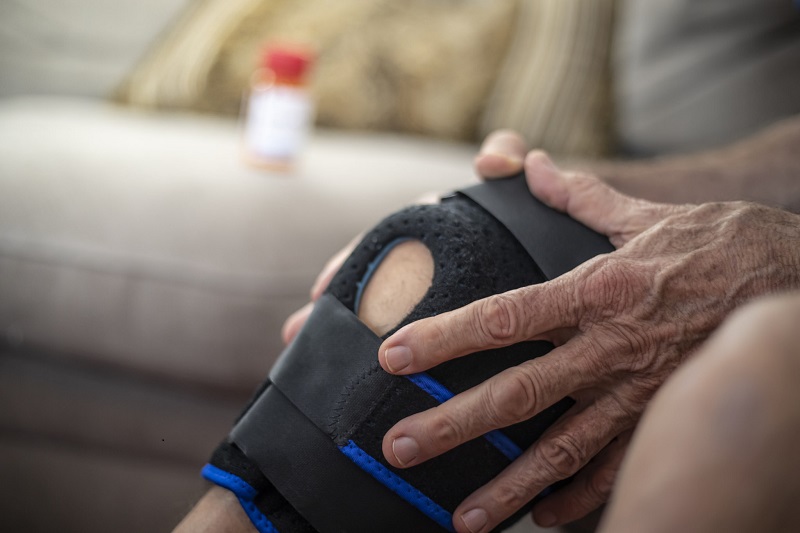How to Relieve Knee Pain Triggered by Everyday Activities

September 08, 2021
Whether you’re jogging, squatting or even taking a long drive, knee pain can strike. Perhaps surprisingly, it’s not just vigorous movements that can produce pain in and around the knee, but also everyday happenings that require sitting for long periods with knees bent, like watching a movie or riding on an airplane.
“Common activities that trigger knee pain include climbing stairs, running and certain sports that involve quick changes of direction, such as basketball, football and soccer,” says Yair Kissin, M.D., vice chair of the Department of Orthopedic Surgery at Hackensack University Medical Center. “A lot of people, regardless of age, want to maintain their high levels of activity, which is great. But sometimes they hurt themselves that way.”
What Causes Knee Pain?
The anatomy of the knee, the body’s largest joint, is especially complex because it merges the thigh bone, kneecap and shin bone. Sometimes the kneecap isn’t properly aligned, contributing to some cases of knee pain. But many cases are prompted by overuse.
On top of that, carrying extra weight or neglecting overall body conditioning can set you up for temporary or chronic knee pain, Dr. Kissin says. For every pound of body weight, knees feel the force of six pounds of pressure, even when walking on flat ground, he notes. Genetics also play a role, so look to your family history for clues whether your knee pain may be an inherited trait.
“It’s OK to run and do more high-impact activities, but you should make sure you also do conditioning exercises such as using a stationary bike or an elliptical trainer,” Dr. Kissin advises.
How Can I Relieve My Pain?
When knee pain emerges, how can you ease the ache? Try these at-home measures:
- Switch up your routine: Stop doing the activity that brought on your knee pain, if possible. If you’ve been jogging, for example, try biking or swimming instead, which are easier on knee joints.
- Rest: Avoid putting weight on the affected knee.
- Apply ice or heat: Cold packs (not directly on skin) several times a day for 20 minutes at a time can reduce inflammation. Applying heat may increase blood flow to the area and feel soothing, Dr. Kissin says.
- Compress: Wrap the painful knee snugly but lightly in an elastic bandage or thin knee sleeve.
- Elevate: When possible, rest with your affected knee higher than your heart.
- Medicate: Over-the-counter nonsteroidal anti-inflammatory drugs such as ibuprofen or naproxen can reduce pain and swelling.
What If Pain Doesn’t Subside?
In most cases, knee pain will improve with home remedies. If it doesn’t after several weeks, see a doctor. Several in-office treatments may be considered, Dr. Kissin says, including steroid injections or physical therapy.
Surgery may be an option if all other non-surgical treatments don’t work. “It’s good to have a well-balanced approach for patients and see what we can offer without resorting to surgery,” Dr. Kissin says. But the best treatment for knee pain is prevention, which should center around weight control and exercise, he adds.
“It’s important to do at least two hours of exercise a week and maintain this as we get older,” he says. “Diet alone isn’t enough. We need to maintain our body, or it won’t be there for us.”
Next Steps & Resources
- Learn how we tailor our joint replacement program to meet patients’ individual needs
- Meet our source: Yair Kissin, M.D.
- To make an appointment with Dr. Kissin or a doctor near you, call 800-822-8905 or visit our website.
- Tips to get relief from joint pain at home
- Four options to help alleviate back pain without surgery
The material provided through HealthU is intended to be used as general information only and should not replace the advice of your physician. Always consult your physician for individual care.
Find a doctor near me
What Is Frozen Shoulder, and Can You Prevent It?

Pain that makes you hesitate to use your shoulder may be a sign of a condition known as frozen shoulder.
